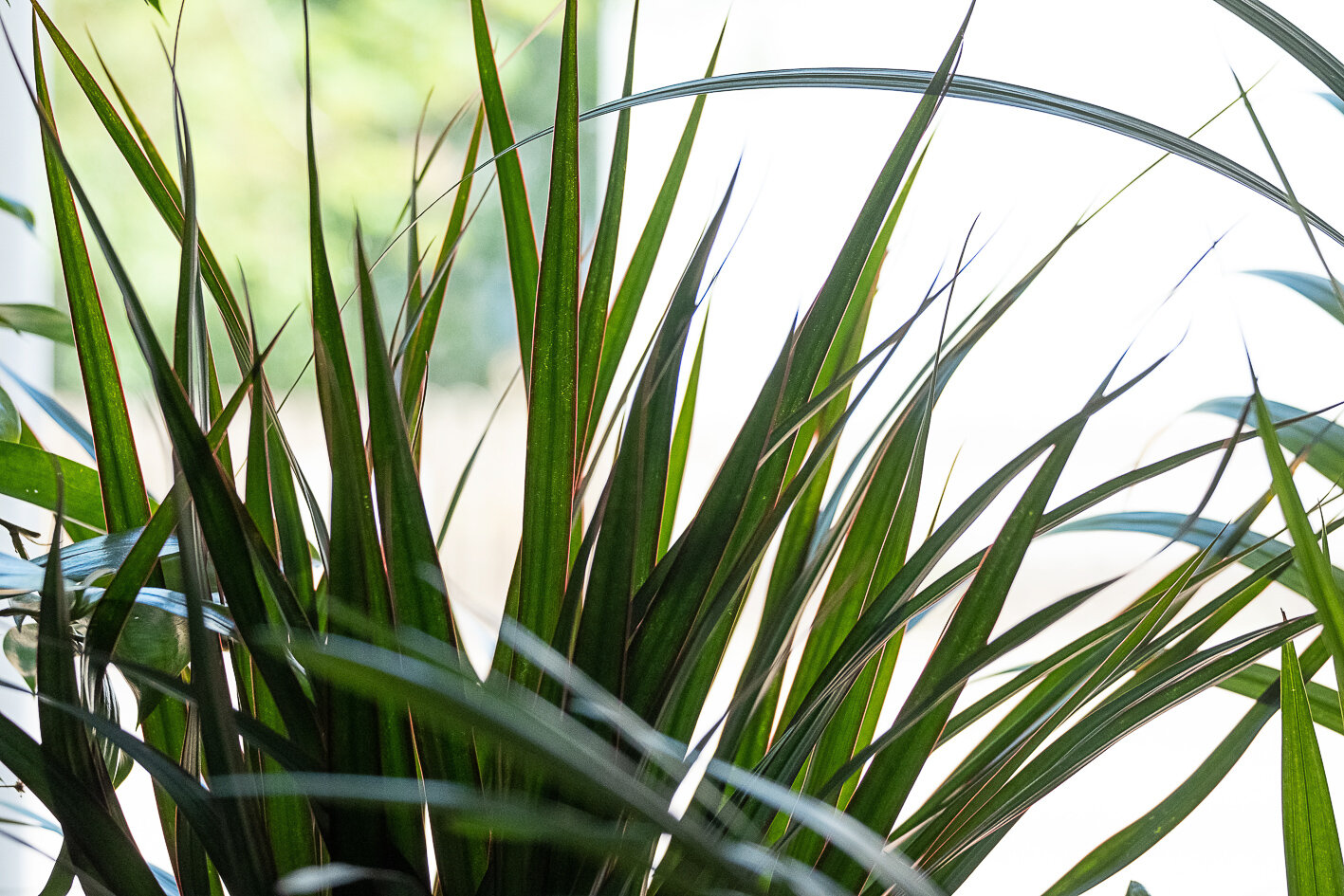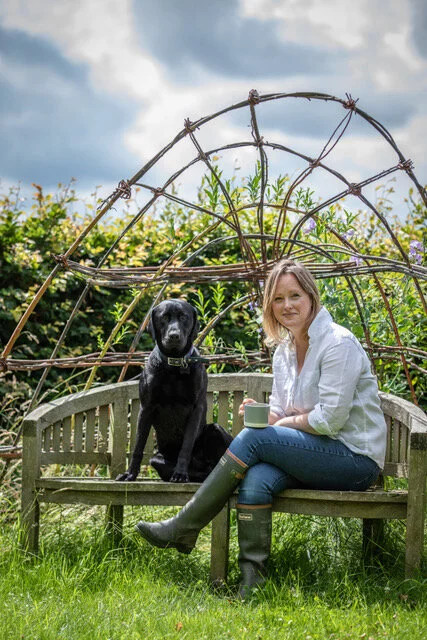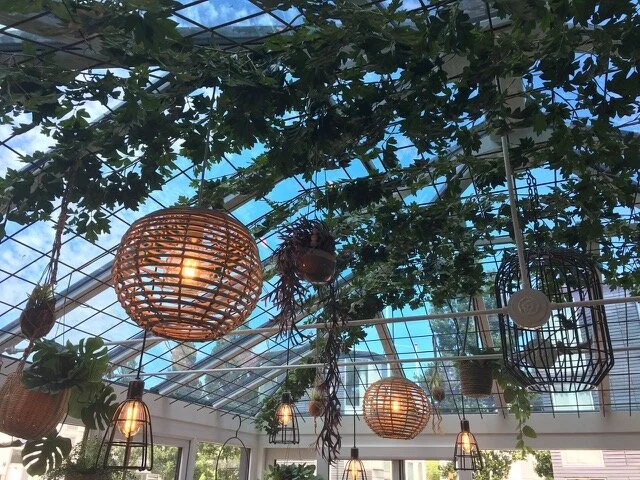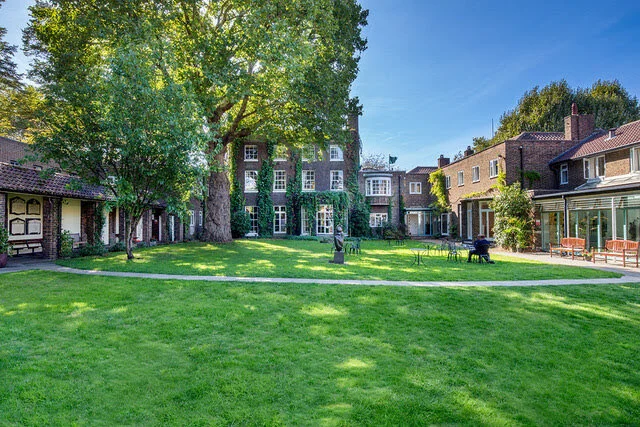Fascinating and positive conversation with Glen Cousquer, covering biology, philosophy and the concept of the self, we talk conservation medicine, experiential education including getting outdoors, and exploring the concept of listening not only for human relationships but also listening to the living world around us. He is a qualified Vet, but after realising how there were underlying issues affecting different eco systems he moved away from the traditional veterinary model into developing a more holistic approach to health and welfare concerns…
Botanic Shed - School of Nature
Sustainability meets Design elegance - the LINK Design
Biophilic Design has so many aspects to it, it is not just plants, greenery, light, colour ways, it is also about using natural materials in products, using natural materials to enhance a space and provide happiness and comfort to those using it. I spoke to the design team of AAID, Allen Architecture Interior Design, working together they created an hexagonal modular wall system made out of sustainable local and recycled materials which also employ local artisans and labour. Just as we do, each 'LINK” block relies on the one below, and can be adapted as shelves, planters, like little pods. Obviously the hexagon is an important shape in nature, just look inside a Bee Hive.
"Living Machines" - The Case for Plants
Carpets, glues, cigarette smoke, paints, plywood, emit gas, formaldehyde, benzene which are linked to cancer, anaemia, lung disease. These are in most workplaces and homes. We speak with Johanna Truestedt, based in Switzerland, she is Senior Consultant for Drees and Sommer on how we can improve air quality, making the working and living environment healthier by learning how the building lives.
Why do we need Biophilic Cities?
Dr Joanna Leach is research fellow at the University of Birmingham. This is a fascinating podcast where some surprising green initiatives being implemented in Biophilic Cities are discussed, think bats and bridges as well as incredible edible towns. The more connected we are with our environment and nature the better. Imagine a city where we can see nature, smell fresh air, hear bird song. Dr Leach makes the really valid point that cities are not 'natural' entities, they are heavily engineered spaces, they are dense, and their impact goes far beyond their borders. We need to think of new ways to improve the environments while also improving the infrastructure of the spaces.
Future Workplaces - A Human-Centric and Holistic View
Shouldn't all employees be catered for when planning and designing a workspace? Oliver Baxter, based in Dubai, is one of a team of three who make up the Herman Miller Insight Group, their focus is holistic and human-centric. In our podcast we discuss biophilic design but also especially now, how intuition when planning workspaces is no longer appropriate, it has to be used on research, on evidence. Aligning this with actually catering for what your people actually "NEED" to do their job. Oli suggests that companies might do well to take a step back, when planning their workspaces. It should it be about catering for everybody, knee-jerk reactions are no longer appropriate as people's lives are on the line, and we need to consider the decisions we are making now…
Living in Harmony with the Earth brings Good Fortune
How can we as Biophilic consultants embrace the Five Elements of Feng Shui to further understand our environment we live and work in, how we relate to our spaces and also how living more intuitively with the elements of nature can make a difference to our wellbeing, future planning, confidence and actually getting off our backsides and doing something. Another fascinating conversation with Luminous Spaces founder, Maureen Calamia, who has developed a practice of Biophilic Design based on the 5 Elements.
Biophilic Design and "Em'play'ees"
Can play really transform our workplaces? Do we need it more than ever? Niklas Madsen is founder of Superlab, an experimental design laboratory with a main goal to study the future workplace and furniture design of tomorrow. Their book "Playful Office - the future office philosophy that will turn employees into employees' kickstarted an innovative journey, researching the benefits of creative play in the office, allowing free thought to flow in the workforce as well as engendering solutions and wellbeing for companies they work with. They are also now exploring AI and other digital tools to help transform spaces for people. Combining that with biophilic solutions has created some really interesting spaces, that encourage staff retention and productivity.
Oliver Heath - How to create Happiness, the benefits of Biophilic Design
Biophilic design principles allow us to bring elements of nature into the built environment, especially into those places where we experience a great deal of stress. Our connection to nature can unlock so many benefits, stress washes off us, we become different people, we can think more holistically about our life and where it’s going. The impact the buildings we inhabit and work in have an enormous effect on our lives, especially now with the restrictions placed on us as a result of the Covid epidemic. With an onset of almost cabin fever, we are recognising the fact that the building we surround ourselves with has a huge impact on our physical, mental and emotional states. Nature can play a valuable role, the benefits of plants and greenery, adding personalisation, direct influence over a space, improve air quality, sunlight, fresh air, easy to improve spaces. S..
Nature and Wellbeing in the Digital Age
Can technology and nature go hand in hand, can we use technology to embrace nature? If so, how? Technobiophilia is a new term coined by writer and researcher Sue Thomas. We speak with her about her book of the same name and also about Nature, Wellbeing in the Digital Age. Quotidian use of our device interaction throws up the most surprising benefits it seems, who would have thought that Grand Theft Auto or FarmVille would give us a potential escape route after work into nature, or how nature found its way into our metaphorical library to be an unspoken lexicon for cyberspace terminology.
Biophilia - A Handbook for bringing the Natural World into your Life
Sally Coulthard, designer and best selling author writes a great column for Country Living “Good Life in the Country.” Her recent book “Biophilia" - You, Nature, Home” is a ‘Handbook for bringing the natural world into your life’ and is one of the most beautifully crafted books I’ve read for years. It feels like you are holding nature in your hands. I was thrilled to interview her and get her take on Biophilia, why it’s important today, why cities and buildings should be weaving biophilic elements into their interior designs and urban planning. We chat about the interconnectedness of nature and our lives, how biophilia embraces many aspects and has many benefits not only from an aesthetic point of view but also environmental and on a more profound level as it reduces negative issues such as stress and improves positive aspects like helping sleep, air quality, nervous systems. The science is overwhelming.
The Conscious Nature Connector
If you are feeling overwhelmed at the thought of going back to work, or which way to turn now, you could well benefit from taking a leaf (excuse the pun) from nature’s book. Deborah Mendes, helps overwhelmed CEOs and business owners del with change and reconnect to their true and powerful selves through connecting with nature. The term biophilia highlights our connection with nature, so I was intrigued to learn more about how Deborah works. From the study of an intricate pine cone to just standing still and feeling strong within ourselves, grounding ourselves, rooting ourselves and expanding outwards, and growing can enable us to adapt, slow down, make atomic changes to help ourselves and those around us have better more productive, peaceful and happy lives.
Sound without Walls - essential improved acoustics in Healthcare
Sound may not be one of the first things we think of in biophilic design but what most people want from the auditory environment is intrinsically linked to nature. Further associations with the natural world are found in our sound preferences. Subjectively many people prefer outdoor sounds, for example the soft sounds of water babbling, leaves rustling and birdsong. However, much of our time is now spent inside and for patients in hospital their stay is often a continuous indoor environment with unnaturally high levels of artificial noise from which there is no escape, not even in sleep, and which are out of our control..
The New Workplace - how to use Biophilic Design
The New Workplace - The office is going to be very different in the future, less about ‘The’ place where you go to do work, it may be more the place where you go to be creative and collaborative. Offices may be used for the more social aspects of work, or those times where you genuinely need to cooperate or collaborate face-to-face. No longer will they be the battery farms of the past. As we emerge from Lockdown things are changing already in the way people work, where they work and the office environments themselves. We speak to Kenneth Freeman, former Head of Innovation at Ambius who has now set up his own consultancy focusing on workplace wellbeing through biophilic design, to ask him how he thinks biophilic design should be used going forward to make workers lives better, not just in the office itself but also at home.
Re-humanising and inspiring the Workplace - For Kenneth, with his background in horticulture, evaluating the effects of biophilic design is essential, helping understand scientifically how and why nature and plants at work really makes a difference to us. Through surveys, pre- and post-occupancy, as well as encouraging companies to engage their staff in the consultation process, Kenneth says this always helps shape the design of a space to make a positive impact on staff morale, communication and also helps acceptance of change. Essential in times like these.
How to use Biophilic Design - How should we decorate our offices and enrich our workspaces? What does a healthy workplace really mean? Why put plants into buildings? What about Home Offices? Should companies be supporting their staff working from home with Biophilic Design enhancement to help wellbeing and productivity? Kenneth answers these questions and more with examples of where biophilic design AND staff engagement has really made a difference.
One and the Same? Feng Shui and Biophilic Design
To Luminous Spaces founder, Maureen Calamia, Feng Shui and Biophilic Design are two expressions of the same concept, in many ways Biophilic Design is a modern take on Feng Shui. Both advocate using live plants, natural materials, natural light. Feng Shui is more intuitive, it’s an art and feeling, Biophilic Design is more scientific and based on research, but Biophilic Design also comes from an intuitive knowing that we are not separate from nature and when we put ourselves in spaces devoid of nature we don’t feel good.
Why Biophilic Design should be essential in Healthcare
Maggie’s Cancer Care Centres have embraced and celebrated biophilic design not only in their interiors but also in the fabric of the architecture, the landscapes and views of nature, plants and trees within and without their buildings. And it is making a phenomenal difference. As the seasons change, so the views change. “Nature is Joyful, and it helps us feel joyful and when we feel joyful we can handle so much more of what life throws at us.” Maggie’s is visionary, it’s mould-breaking and is important evidence that biophilic design is ESSENTIAL in healthcare….
Forest Therapy
When was the last time you took a walk in the forest? We all recognise the positive power that being in nature has on our wellbeing and mindset, and some of us also are familiar with the Japanese ‘art’ of Shinrin Yoku, or Forest Bathing. What you might not have known is that there are “NHS Forest” hospitals. In this podcast we discuss whether there is a need for a nature-based health strategy to be…
How a NASA Study led to "Forest Air"
In 1986 NASA was researching the ability of plants to absorb harmful gases. Their research had a huge impact on author and precision mechanic Jørn Viumdal who went on to set up Greentime AS. He contacted NASA and they began to develop the space stations of the future and researched how they could use nature to improve the air quality on board the space stations…
What do Biophilic Design, Feng Shui and Wabi Sabi have in common?
Acoustics, planting, colour ways, furniture design, textures, space all have an impact on us. Whether this is at home or in the workplace, how we decide to design these spaces can make a whole difference to our mind set, they can make us stressed and unproductive or they can make us focussed, calm and inspired. We have control on what we create. We have a duty of care to ourselves to make sure we respect each other enough to want to make our homes and offices, hospitals and so on nice places to be…
Unblocking Creativity and aiding Healing in Times of Change - Nature, Retreats and a Haven in London
Sharing a space in silence can be uplifting, revelatory and inspiring, sharing a space in nature can be an even more powerful experience. Allowing your brain to think in different ways by taking time away by being in a different space unblocks creativity, it can help you shape a different way of thinking, a different ways of being. This is important in times of change, career change and stress. Doing this surrounded by nature compounds the effe..




















